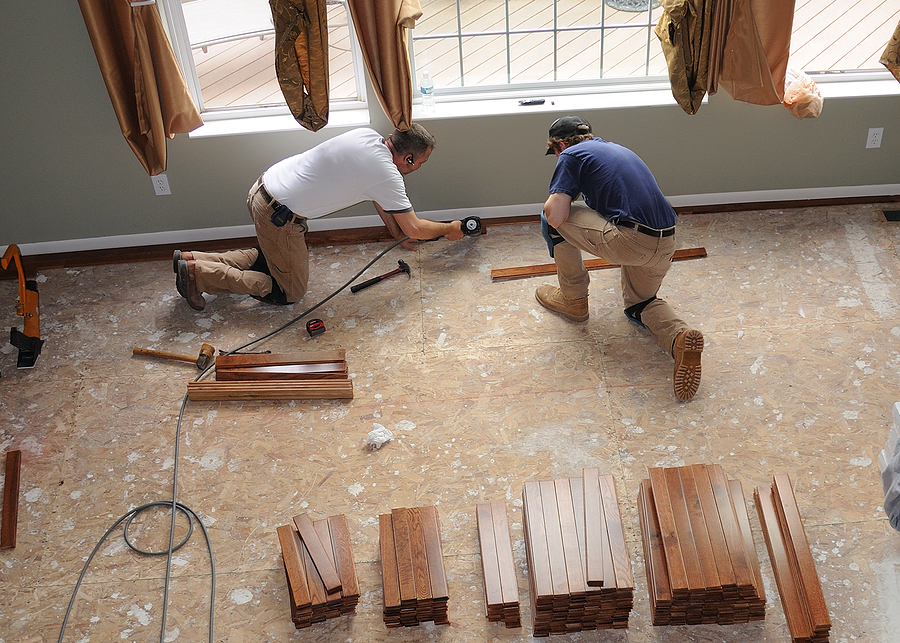As the spring ushers nicer weather, many homeowners use it to begin their home improvement projects. However, waiting for too long never pays off, as you’re getting into a line of homeowners doing something around the house. This means that contractors are overwhelmed with work, so they demand higher rates and longer wait times.
Home improvement centres are jammed with busy DIYers, and the heat is ever rising. On the other hand, if you’re determined to do something about it now, here’s what you should focus on.
Attic insulation
Some home improvement jobs aimed at beating the summer heat are easier to complete than others, and attic insulation is one of those. If the rest of your home is insulated, your job is half-done.
However, if you felt a faint chilly breeze during the winter, you’ll probably also feel the burn of the summer. If you’re going to do everything yourself, there’s no time to waste. Working in the superheated attic, you’ll feel like a nuclear engineer desperately trying to rein in the blazing inferno in the Reactor 4 building of the Chernobyl NPP.
Similarly, if you intend to hire a contractor to do the insulation work, get bids as soon as possible and schedule the work. Insulation and AC contractors will be the most sought after professionals when the summer arrives, and rest assure they know how to charge working in a hot attic.
Window retrofits
Repairing or replacing the existing windows is one of the most effective anti-heat home improvement projects. A lot of house heat gain can be related to the quality and type of windows that are installed. If the windows leak air or are made of energy-inefficient and obsolete materials, they will do a poor job at retaining cool air inside your home.
Sealing, repairing, and waterproofing are the most effective ways of reducing heat during the summer months. If you decide on replacing, choose double or even triple-pane high-performance glass with a low E-coating that reduces the heat transfer.
Thermostat upgrade
If the thermostat that regulates your air conditioner hasn’t been updated with a programmable model, chances are you’re spending up to 20% more energy for keeping your home cool. Programmable thermostats adjust the temperature in your home automatically when no one’s at home and lower it back to a comfortable level before you arrive. Some of them are even Wi-Fi enabled, so you can access them from a smartphone or tablet. These thermostats even feature the smart setback option that allows them to intelligently adapts to changes, resulting in even greater energy savings.
HVAC overhaul
Apart from making the home more airtight and updating the controlling circuits, you should make sure that the air conditioner, heat pump, ceiling fans, dehumidifiers, and other cooling appliances are working properly. This is especially critical in regions that heavily depend on AC for cooling, like Australia, where three out of four households rely on air conditioning in fighting the summer heatwaves. To prevent power outages, many homeowners there hire a certified level 2 electrician in Sydney to upgrade the power supply of their AC, to prevent it from overloading. The last thing you need is the air conditioner that falls out in the middle of the summer’s heat spell when you need it the most.
Sealing leaks
Repairing the windows surely helps a lot, but there are other parts of your home that can deteriorate over time, allowing the cool air to seep outside and the warm air to leak inside. Doors and window frames, skylights, vents, and other ill-fitting assemblies are just a few examples of areas where air can circulate freely. A tube of sealant and an applicator are and easy and cheap fix for various leaks around the house. By making sure all the cracks are sealed, you won’t only keep your house cooler but also your electricity bill lower since your AC won’t have to work so hard for the same effect.
Repairing winter damage
By repairing any damage caused by winter storms you’re preventing small problems from becoming bigger. Perhaps rainwater has leaked through the roof or the siding, or the basement got flooded. A leaky roof is a sign of a weak structure – if water can leak, so can air. Water damage in the basement, as well as the chronic moisture, can cause rot and mould that further weakens the home structure. Although there’s less chance for torrential showers and storms in the summer, make sure the gutters and downspouts are intact. After the winter period, they’re likely jammed with debris, or even dislodged, which is a problem if you plan on collecting rainwater for irrigation and cooling down the backyard.
The projects listed here range from more extensive like roof repair and window replacement to simple ones, even a first-time handyman can do. However, they all work together in helping us survive the sweltering summer heat.

